










NCS4 is the nation’s only academic center devoted to the study and practice of spectator sports safety and security.
We support the sports and entertainment industries through innovative research, training, and outreach programs. Our mission is realized by working closely with a diverse group of organizations and subject matter experts to better understand the threat environment, identify vulnerabilities, communicate risk-mitigation techniques, and close capability gaps.
We will be a leading partner with government, private sector, and sports and entertainment organizations to create and deliver critical resources for enhancing safety and security.
The NCS4 collaborates with professional associations, government agencies, academic entities, and the private sector to develop critical resources and networking opportunities, such as the annual conference and forums, as well as best practices, guidelines, and technology solution whitepapers. The NCS4 also provides industry engagement opportunities through an international technology alliance, product review and operational exercise program, and exhibitor and sponsorship options at events.
A Note From the Executive Director, Dr. Stacey A. Hall
5 NCS4 TEAM
How red teaming in sports venues can help foster a culture of security awareness and resilience, ultimately leading to safer and more secure environments.
Meeting the needs of guests with access and functional needs positively impacts overall safety while also making the gameday experience more enjoyable for everyone.
The 2024 Summer Olympics in Paris set a new standard for security heading into the Los Angeles Games in 2028.
The NCS4 recently published an industry research report on professional sports venue security issues, emerging threats, and technology solutions.
National Center for Spectator Sports Safety and Security 118 College Drive #5193 | Hattiesburg, MS 39406 | 601-266-6183 NCS4.USM.EDU
Dr. Stacey A. Hall
We are excited to present our Fall edition of the Gameday Security magazine. This issue covers the importance of considering access and functional needs during security planning efforts, reflecting on the 2024 Paris Olympics as we look toward Los Angeles 2028, and how managers can test their safety and security measures through Red Teaming.
The NCS4 mission is to support the sports and entertainment industries through training and education, research, and outreach programs. The NCS4 continues to be a significant resource in helping advance safety and security practices, and I would like to share our impact and progress on some items since the summer, including:
• The 2024 Annual Conference in Phoenix, AZ, was a tremendous success and a sold-out event with the most attendees in conference history.
• Planning is complete for the forthcoming Industry Forums. The Marathon and Endurance Events Forum will occur in Virginia Beach, VA, on December 3-4, 2024, and Duke University will host the Intercollegiate Forum on January 28-29, 2025. There are a few spots left, so please register soon!
• The 16th Annual Conference and Exhibition is scheduled for June 30-July 2 at the JW Mariott San Antonio Hill Country Resort and Spa.
• Approximately 48,000 people have been trained through the DHS/FEMA training program. The new FEMA-approved course, ‘Sport and Special Event Staff Training and Development,’ will be released in January 2025.
• In August, a train-the-trainer program was conducted at the NCS4 headquarters on the Southern Miss campus to train new and experienced instructors on FEMA courses.
• The NCS4 eLearning suite consists of four courses, including frontline staff foundational skills, crowd management, venue staff training, and the senior leader course in sports and entertainment security. Check out NCS4Learn for more information.
• The online Best Practices have been updated to include editions/additions from the interscholastic and professional and entertainment facility communities.
• The NCS4 Technology Alliance members have planned a Tech Webinar for December 2024, titled ‘The DHS SAFETY Act and Its Broader Implications for Risk Management.’
• A new research seminar on sportsmanship attitudes and spectator aggression is now available.
• The 2024 Venue Security Director Industry Research Report is now available, exploring professional sport venue security issues, emerging threats, and technology solutions.
• The NCS4 staff and research affiliates presented at local, national, and international conferences, workshops, and academic classes. In addition, they have contributed to peer-review journal articles, professional publications, and podcasts.
• NCS4 Executive Director, Dr. Stacey Hall, is editing a Handbook of Sport Security to be published in 2025 by Routledge, a Taylor and Francis Group.
• The NCS4 National Taskforce on Lightning Safety is working on its final draft of a lightning safety guide for outdoor venues and events in collaboration with the DHS/CISA.
• The Certified Sport Security Professional (CSSP) program continues to grow. The certification is for professionals currently serving in the sports security industry or those individuals planning career transitions to the sport and special event security industry. Check out the application process here
• An eBrochure highlighting the NCS4 programs and services is available, and we encourage our stakeholders to share it with other interested parties.
It is the season for giving thanks, and the NCS4 team is grateful for our partnerships with professional associations, government agencies, solution providers, and academic entities. We also appreciate the support of our membership base. The National Advisory Board, Advisory Committees, and Technology Alliance continue to be instrumental in helping shape our strategic priorities to address the challenges and needs of our industry.
The NCS4 wishes you and your loved ones peace and happiness during the holiday season. l
Kind Regards,

Stacey A. Hall, Ph.D. NCS4 Executive Director and Professor of Sport Management
Dr. Stacey A. Hall
Executive Director and Professor of Sport Management
Lauren Cranford Director of Operations
Daniel Ward Director of Training and Exercise
Dr. Brandon Allen Director of Research and Associate Professor of Sport Management
Michael Broadus Curriculum Manager
Anthony Palazzolo Manager of Marketing and Business Development
Sara Priebe Event and Membership Manager
Jonathan Ruffin Instructional Design Specialist
Tymika Rushing Business Affairs Manager
Jonathan Stanford Training Manager
Roger Swartz Senior Training Manager
Natalie Williams Training Manager
Aayush Gautam Web Developer
Peyton Phillips Graduate Assistant
Brooklynn Pinegar
Graduate Assistant
Nishit Thapa
Web Developer
Lauren Villarreal
Graduate Assistant

NCS4 LEARN provides eLearning professional development opportunities for all staff levels, including frontline staff, supervisory, and leadership. Organizations can enroll and monitor their teams in asynchronous and customizable learning experiences. The course catalog currently includes the following:
• Frontline Staff Foundational Skills – introduces frontline staff members to the skills necessary for providing guests with a safe and enjoyable experience.
• Venue Staff Training – prepares venue staff to support crowd management needs and assist venue occupants.
• Crowd Manager Fundamentals – provides a foundational understanding of safety and security principles for frontline venue and event staff with role-specific add-ons (i.e., guest services, parking management, concessions, ticket-takers).
• Senior Leader Course: Sports and Entertainment Security – covers security leadership fundamentals in business management, emergency management, planning considerations, legal and regulatory guidance, crowd management, and security procedures.
Please visit the website or contact us at NCS4Learn@usm.edu if you have any questions or would like to inquire about bulk registration.

Scan the QR code or visit our website to learn more.
NCS4.USM.EDU/ELEARNING
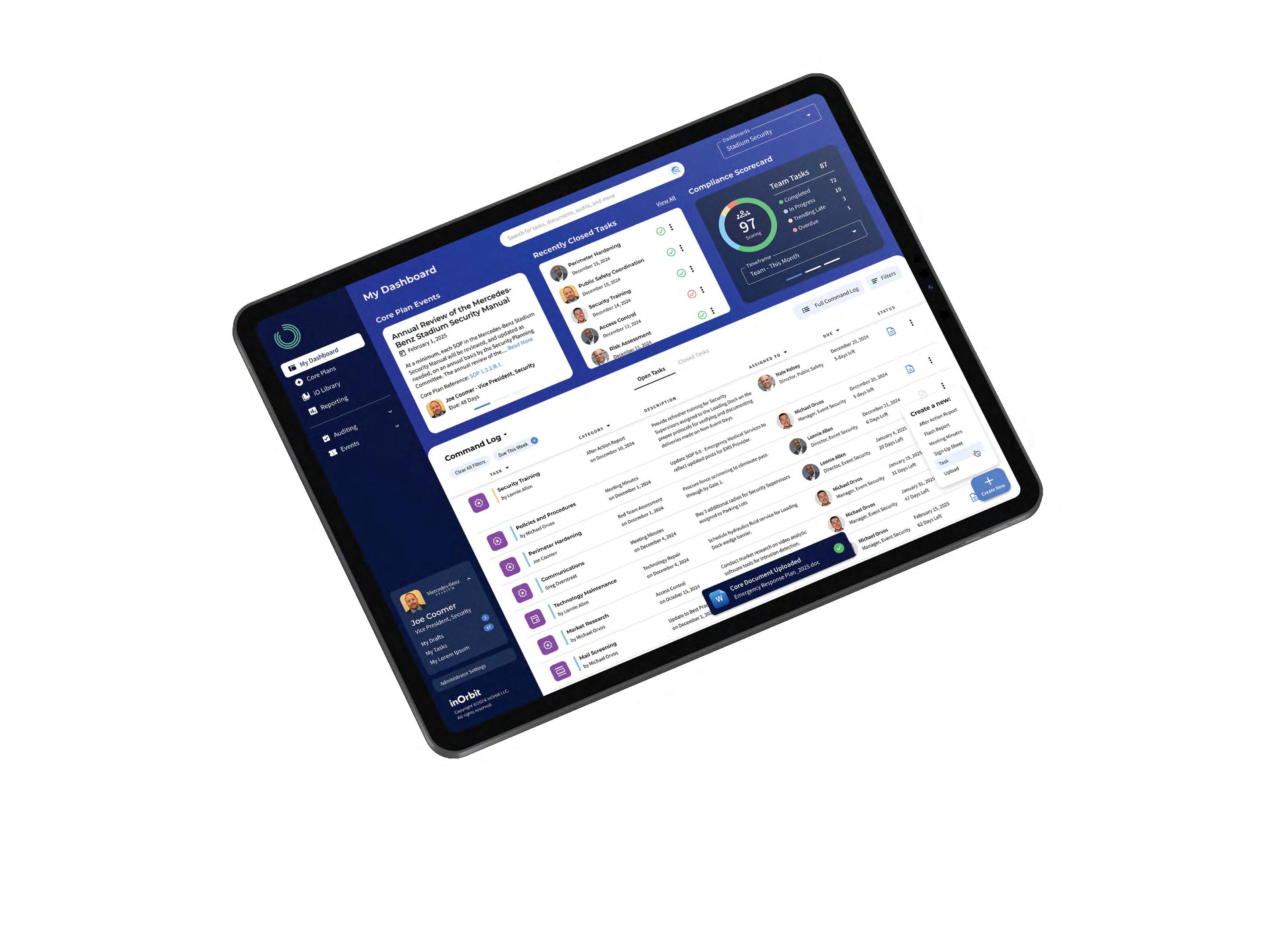




How red teaming in sports venues can help foster a culture of security awareness and resilience, ultimately leading to safer and more secure


THE FIRST TIME PAUL GROHOWSKI INVITED A SO-CALLED “RED TEAM” into the Kia Center — home of the National Basketball Association’s Orlando Magic — during the 2022-23 season, he couldn’t help but give off a little swagger how about tight and effective the venue’s security teams were at access points in and around the arena.
“I challenged the red team: ‘See if you can get into our building. Try to penetrate us; try every way you can.’ We gave them fake credentials and told them to see how far they could get,” says Grohowski, a retired police chief who now is a security manager at Orlando Venues, the city-owned entity that operates the Kia Center, Camping World Stadium, and other facilities. “Well, they found their way in. They human-engineered their way past things and pointed out vulnerabilities we wouldn’t have known about if I wasn’t willing to have someone honestly critique us.”
“In simplest terms, red teaming is secret shopping for security,” says Sal DeAngelis, vice president of operations and security for Major League Baseball’s Philadelphia Phillies, which has been bringing red teams affiliated with a third-party firm through Citizens Bank Park for 20 or so games, concerts, and other non-sporting events per year since 2017 — and sometimes even when the stadium is dark. “When we got serious about applying for the [Department of Homeland Security’s] SAFETY Act designation, that’s when we started looking at our security program and trying to shoot holes in it, finding vulnerabilities. We think we have a good security program, but unless we test it, how do we know it’s working?”
For the Phillies, red teams typically test for several things. They include such basic protections as prohibiting attempts to access the ballpark and back-of-house areas without proper credentials, along with several other tasks detailed on a lengthy internal checklist. Teams and organizations might also focus on additional venue-specific security elements.

[Red teams] humanengineered their way past things and pointed out vulnerabilities we wouldn’t have known about if I wasn’t willing to have someone honestly critique us.
PAUL GROHOWSKI Orlando Venues
Generally speaking, red teams consist of two to five members who arrive unannounced to perform a security audit to identify and exploit vulnerabilities in systems, policies, and processes. Sometimes, they work in tandem, and sometimes, they work separately, and they typically document their experiences with photos and videos captured via hidden cameras on lapels or eyeglasses.
The main goal of each assessment is to evaluate the effectiveness of an organization’s security measures, incident response capabilities, and overall resilience against real-world threats, according to David Born, senior director of business services at Denver-based Prevent Advisors and who is involved with the consulting agency’s red teaming services. And the fewer people in the venue that know red teaming is taking place, he says, the better. (Incidentally, Prevent Advisors’ Red Team Assessment Services program is the first of its kind to be awarded a DHS SAFETY Act Designation.)
“Red teaming is part of the continuous process of improvement,” Born says. “This includes risk assessment, mitigation, doctrine development, training, testing, feedback, after action and implementation. Think of the red team as the good guy acting as your adversary, supporting things you do well, and then also identifying areas for further development.”
Venues can deploy red teams in a variety of ways, he adds, but the general focus usually is on five key security components:
1. Screening, with an emphasis not on the technology but on the human element: Are prohibited items searched for and confiscated? Is everyone screened, including media, team officials, and venue staff? Or are people entering without a ticket? Are staffers wanding guests who set off magnetometers, regardless of whether those guests claim to have, say, a metal plate in their hip?
2. Access control for both back-of-house and prohibited areas: Are passes and other credentials checked? Can unauthorized individuals enter the venue via a delivery ramp or service area or sneak into VIP areas?
3. Front-of-house operations: Are staff members positioned in front of the venue to assist guests in preparing for the screening process, as well as at gate entrances to help guests unfamiliar with the venue’s layout? Is there a police or other security presence around the venue?
4. Back-of-house operations: Can unauthorized individuals access a locker room or other restricted areas?
5. Field of play: Who can access the field or the court? And how far can that individual get before they are stopped?
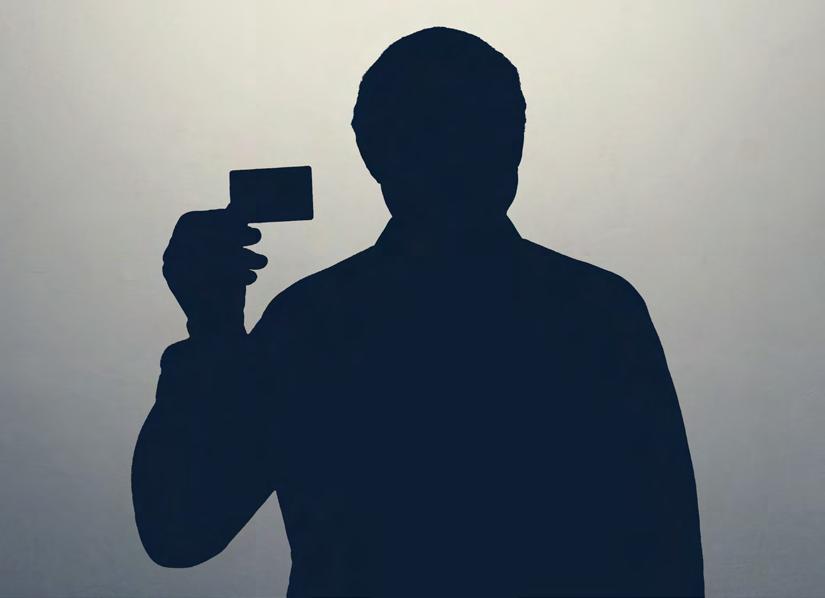
“The last thing we want, as part of the red team, is to be part of the event,” Born says. “So if I can access the door that could provide access to the field, that’s where I stop. We are there to identify the gaps.”
“I don’t know how popular red teaming is, but I think it might not be as popular as it should be,” Grohowski adds.
Red teaming is not intended to create “gotcha moments,” according to Born. Rather, its purpose is to help determine what improvements are needed in current venue operations.
“After a red team exercise, when a client finds a vulnerability, they have the opportunity to correct it,” Born says. “Most clients develop an after-action strategy immediately after our visit. For example, at one of our client’s venues, one of the red team testing questions was to enter the venue without being screened. We had one of our red team members inside of the venue walk to the bottom of a stairway and allowed the other [red team] member on the exterior to enter the venue without being subject to screening. Based on this action, the venue subsequently posted a staff member on the exterior within close proximity of the stairwell, which mitigated the issue.”
At Citizen Bank Park, DeAngelis also uses red teaming to identify security practices and procedures that work well.
“If a staffer does something good, as reported to us by the red team, we acknowledge that,” he says. “It could be stopping someone from entering the ballpark without a credential or finding an anomaly on someone’s person or in their bag.”
The Phillies recorded their highest overall red team scores ever during the 2024 season, a fact DeAngelis attributes to “our security team making sure that when we get the after-action report, we just don’t file it away,” he says. “We talk to the staff involved — and their supervisors. We show them the video and say, ‘Look, this is what happened, and we need to correct it.’ We’re dealing with humans. You can train someone how to do something, but mistakes do happen. And we’re trying to minimize the mistakes. We also now bring the video to them, so staff members don’t have to feel like they’re walking down to the principal’s office. Otherwise, it can be a long walk from their section to their supervisor’s office.”
Red teaming has also led to changes at the Kia Center, where Grohowski says some of the same red team members return to the venue for subsequent testing and report that “we made marked improvements.”
These examples illustrate red teaming’s positive impact on safety and security, reinforcing how no venue should rest on its laurels in lieu of consistent refinement.
The last thing we want, as part of the red team, is to be part of the event. So, if I can access the door that could provide access to the field, that’s where I stop. We are there to identify the gaps.
DAVID BORN Prevent Advisors
“Not every venue is perfect,” Born says. “One of my colleagues says we want our clients to try to put us out of business by being perfect every time. But we’ve never had an absolutely perfect client. Some venues do a very good job, but there are always ways to improve because there are always new ways people try to bend the system.”

The Phillies use a third-party firm to run the team’s redteaming efforts. “If you have the means, that’s the way to go,” DeAngelis says.
Other teams and venues tap local law enforcement personnel. At the Kia Center, meanwhile, Grohowski collaborates with the Department of Homeland Security’s Orlando region and Transportation Security Administration officials from the Orlando International Airport to bring in red teams at no charge.
“I have found from my law enforcement background that DHS has a lot of free resources available to municipalities and local agencies for the asking — from training to critical analyses of buildings that include fencing, cameras, lighting, cyber, infrastructure, and guards. So I knew those resources were potentially there for red teaming, too. The TSA’s red teaming group tests screeners at airports, and they test airport perimeters. Who better than them?”
Regardless of how red teaming is implemented, it’s worth noting that Grohowski sees another less obvious benefit to the practice.
“Your building must have doors with interior push bars for egress in the event of an emergency,” he says. “But nothing prevents someone inside with a ticket from going to one of those exits, pushing the door open, and letting somebody else in. Those are vulnerable points for all venues, and we’ve learned a lot from those types of penetrations. They can lead to a loss of revenue — or someone could be nefarious in their intentions.”
To be clear, red teaming is for more than just large professional and college stadiums and arenas.
“We work with a number of small and medium-sized venues that have incorporated red teams,” Born says. “They may not have all the resources that a Tier 1 Venue has, but red teams will still be able to identify things that are done well and things that need more consideration in the future. Every venue that conducts red teaming should customize it to fit their needs because every venue is different.”
Red teams have been deployed at the Kia Center about 15 to 18 times during the past two years, Grohowski says, and they helped inspire a series of offseason security-related enhancements that Orlando Venues and the Orlando Magic implemented during the NBA’s offseason.
“We made a major investment and brought in all of our partners — everyone from our janitorial companies to our food and beverage service providers to our third-party security people, our inhouse security team, every first-line supervisor — for an eight-hour in-service leadership training program,” he says. “We brought in an outside consulting group to put this on, to reinforce the importance of everybody’s jobs and how much of a linchpin they are for our organization. And I’m anxious to see what this season looks like. Because, honestly, I don’t think we’ve ever been in a better place organizationally.” l

















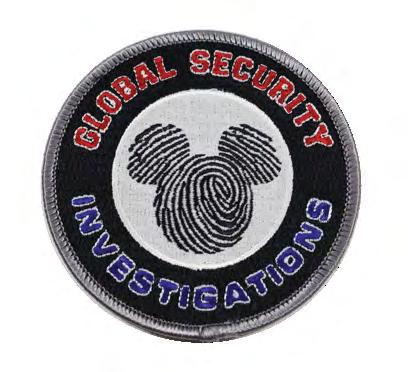





Meeting the needs
guests
positively impacts overall safety while also making the gameday experience more enjoyable for everyone.
By Michael Popke
WHEN CONSIDERING ACCESSIBILITY BARRIERS IN SPORTS VENUES, it’s easy to default to focus on accommodating guests in wheelchairs while perhaps inadvertently overlooking those with other access and functional needs (AFN), such as hearing and vision impairments or sensory sensitivities. In fact, doing so is quite common, according to Drew Pittman, associate athletics director for event management and facilities at Baylor University — which is why he trains his staff to offer a level of care that makes events more exciting and memorable for all attendees.
Why wouldn’t we want everyone to be able to take part in our venues? So whatever barriers we need to remove, whatever services we need to provide, makes sense from a customer service standpoint.
DREW PITTMAN
Baylor University
“I know some people probably think of the Americans With Disabilities Act as burdensome,” Pittman says. “We don’t perceive it that way here. Because why wouldn’t we want everyone to be able to take part in our venues? So whatever barriers we need to remove, whatever services we need to provide, makes sense from a customer service standpoint.”
Indeed, just as venue operators strive to implement security measures and programs that do not overwhelm guests and detract from the gameday experience, they also must make sure the diverse needs of their guests are met in other ways.
And some of those needs are less obvious than others. Pittman recalls a Baylor softball fan who needed to bring an umbrella to games to shade himself, because of a medical condition in which he could not become overheated. While umbrellas are banned at Getterman Stadium, the fan’s need is clearly covered under the ADA, and Baylor made the accommodation by allowing the fan to bring his umbrella.

Historically, you’ve had really wellintentioned emergency managers who were former law enforcement, former military, and EMS, but they didn’t have much lived experience with functional needs. So there were gaps.
L. VANCE TAYLOR Office of Access and Functional Needs California Governor’s Office of Emergency Services
While access and functional needs don’t always fall under the, ahem, umbrella of security, they do impact the safety of all guests — especially when it comes to ingress and egress.
“The approach to security is different in a lot of places,” says Victoria Lopez, director of safety and security for Austin FC in Texas, which plays its home games at Q2 Stadium. “For us, it’s very customerservice based, and we operate with what we call ‘safe flexibility.’ We want to be safe first, but we also want to be flexible in order to provide a good experience. So we adapt as new situations arise because there are so many unexpected needs and invisible needs — things we can’t know upfront.”
According to the California Governor’s Office of Emergency Services (the only office of its kind in the country), the term “access and functional needs” includes “individuals with physical, intellectual or developmental disabilities, chronic conditions, injuries, limited English proficiency or people who are non-English speaking.”
That definition comes straight from the detailed document Cal OES released in November titled “Integrating Access and Functional Needs Within Large Venue Safety & Security Operations.” The report was created in coordination with security professionals at large venues, as well as industry experts and government and non-government partners. It’s intended to support large venue operators and provide guidance, best practices, and informational resources to integrate access and functional needs into their emergency operations plans — thus better ensuring the safety and security of guests.
“Historically, you’ve had really well-intentioned emergency managers who were former law
enforcement, former military, and EMS, but they didn’t have much lived experience with functional needs. So there were gaps,” says L. Vance Taylor, chief of the Cal OES Office of Access and Functional Needs, who was diagnosed with muscular dystrophy as a child and uses a power wheelchair. “My role is to identify the needs that all Californians have before, during, and after disasters, so we can meet the needs of the whole community.”
Once those needs are identified in venues, security teams and customer service personnel must work together to address them, Taylor says. Here are some of the key strategies emphasized in the “Integrating Access and Functional Needs Within Large Venue Safety & Security Operations” report:
• Adhere to inclusive planning for facilities and establish an AFN advisory committee that includes communitybased and disability organizations that can help venue operators better understand some of the accommodations their facilities might be missing.
• Use accessible communication components such as American Sign Language interpretation services and electronic accessibility services, as well as audio announcements given in multiple languages, closed captioning in video messages, and the use of visual aids such as flashlights, color-coded alerts, and pictograms.
• Specify legal and illegal procedures for the screening of service animals.
• Develop inclusive emergency evacuation procedures, including restricting elevator usage to guests with wheelchairs or other mobility aids.

Register now to secure your spot!
Objective: To address key safety and security challenges facing intercollegiate athletic programs and to share best practices for continuous improvement.
Collegiate athletic programs and venues attract a large number of athletes and spectators, making safety and security a top priority for venue operators, public safety officials, and local communities. Discussing current issues and exploring solutions in a forum environment will help colleges and universities, athletic conferences, and associations enhance safety and security plans and operations.
Athletic administrators and staff from NCAA Division I, II, and III institutions, athletic conference administrators, football bowl administrators, NCAA representatives, campus law enforcement, local and state law enforcement, facility managers, government officials, emergency managers, fire/HAZMAT, emergency medical services, city planners, governing bodies, and sports commissions are invited to register as attendees for the Forum.
• Extreme Weather Preparedness
• Crowd Management and Control
• Communications
• Perimeter Security and Access Control






• Event Staff Management
• Incident Reporting and Documentation
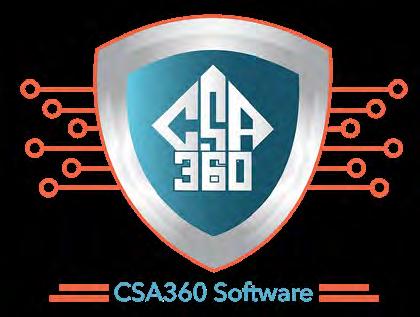










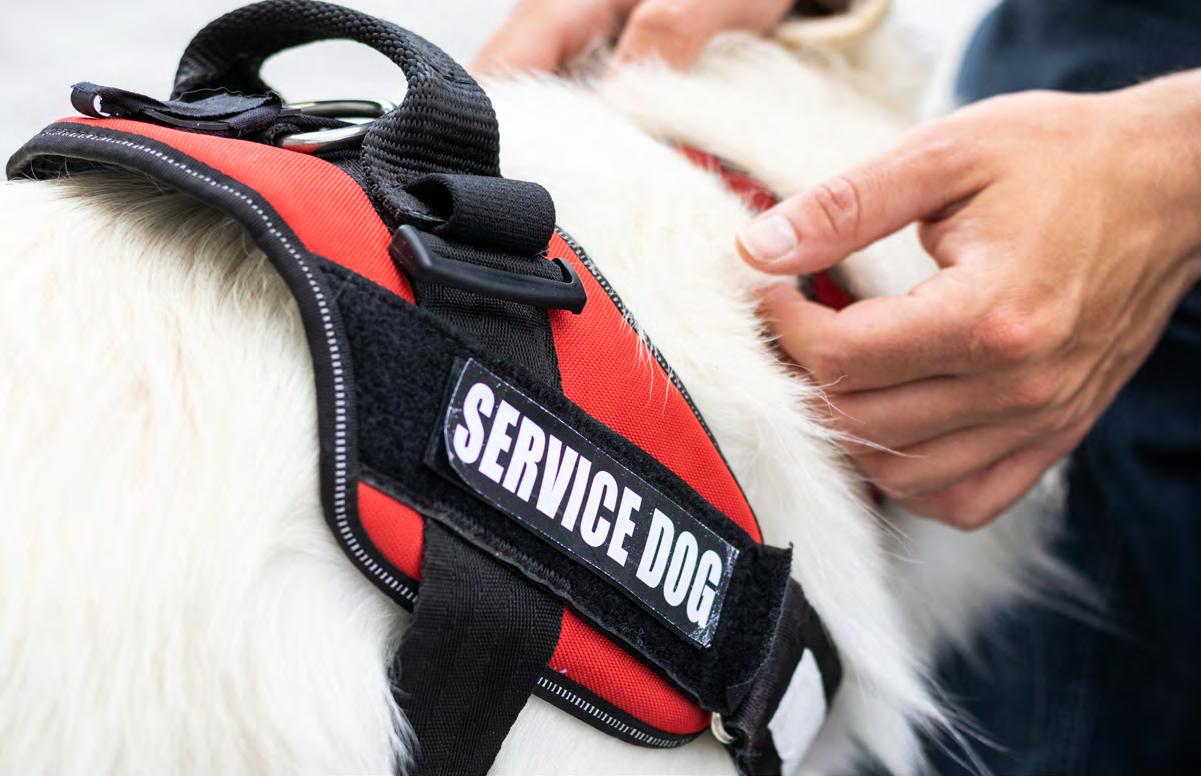
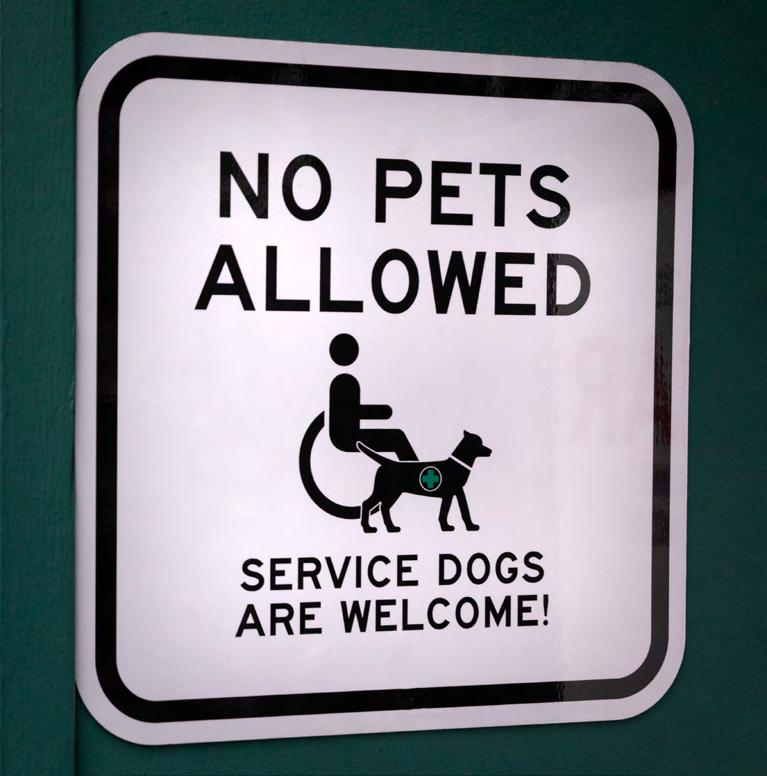
“In a stadium or arena, you’ve got thousands and thousands of people together, and some of those individuals are going to be people with special considerations,” Taylor says. “And so, are the safety and security plans at those venues fully incorporating and entrusting the needs of all guests?”
That includes making all guests feel welcome almost immediately upon entry. Some venues have clearly designated locations for guests with access and functional needs to ask questions — or even just a general guest-services booth staff with well-informed personnel who can facilitate any on-the-spot questions (or know who to seek out to find the answers). Baylor goes a step further by training staff to interact with guests and make them feel comfortable.
“We try to ask open-ended questions: ‘Hey, is there anything we can do to help you today?’ Or, ‘Hey, how can we assist you today?’” Pittman says. “So it’s just really a proactive customer service approach. I think maybe a lot of venues think you’ve got to make a bunch of changes — and I’m obviously a huge proponent of complying with your regional, state, and federal guidelines. But, honestly, these are things we should all be doing every day, all the time, for folks in our venues. And I don’t think that’s a huge lift.”
Pittman’s 21-year-old adopted son has been blind since birth, and Pittman has seen first-hand the type of flubs that security and guest service personnel can make when accommodating visitors with access and functional needs. When the family would go to theme parks, for example, staff members would mistakenly treat his son as if he had a mobility impairment — highlighting a lack of general awareness.
“If there were stairs to get on the ride, they would want him to go on an elevator that would take him up to the front of the line,” Pittman remembers. “But he would joke, every time we got on the elevator: ‘Do they think my legs don’t work?’”
Those kind of misunderstandings drive Pittman to ensure Baylor’s venues offer as many accommodations as they can, including things as basic as assistive listening devices, which are used to provide a clearer audio signal than the venue’s sound system can typically provide. While they might be available to users who request them, Pittman says the batteries could be dead, or staff members might not be trained on how to distribute them — if they can find the devices in the first place.
“When somebody needs one of those systems, and it doesn’t work, or the staff person can’t find it, that’s a real letdown to the guest,” he says.
Lopez’s professional background includes being a certified special educator and theater director in Texas, which gave her plenty of experience before entering venue management in working with young people who had a variety of individual needs.
“Those students, of course, grow up to be adults, and they visit stadiums,” she says. “So that gave me greater insight into how to program for people with different situations and needs.”
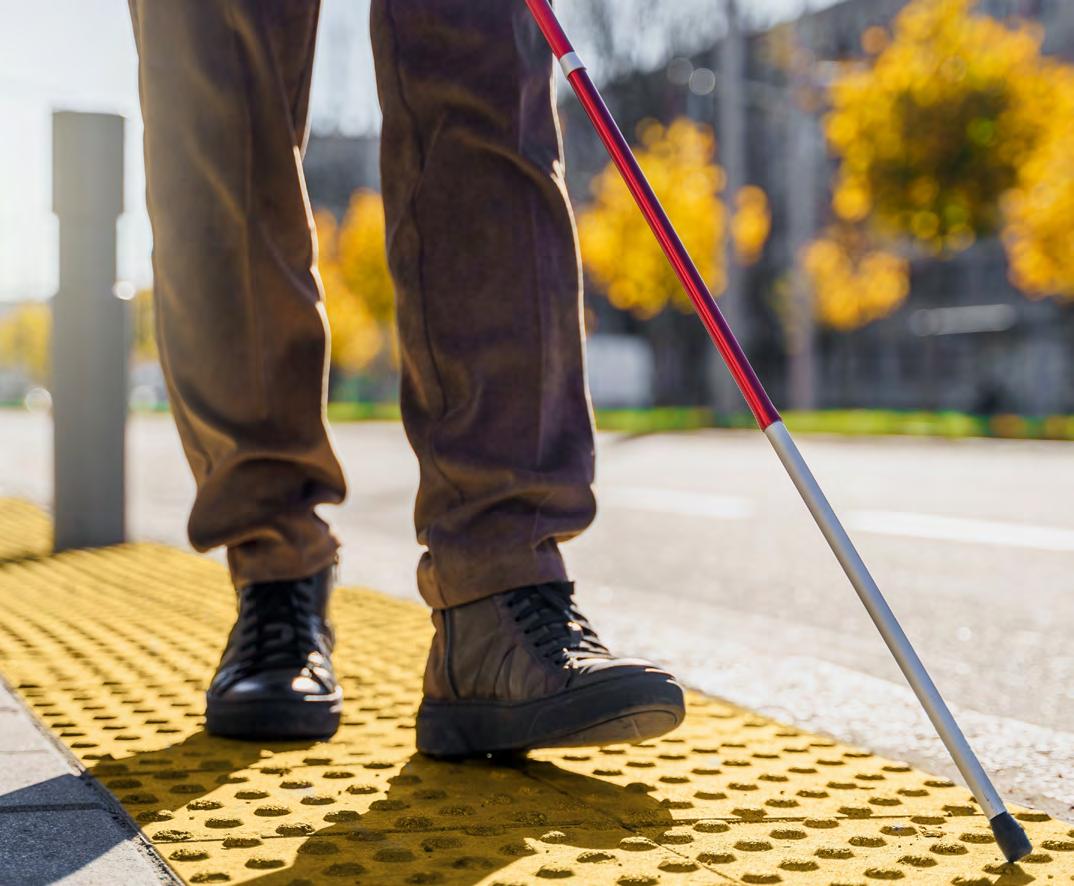
Increasingly, venue programming includes specialized equipment and spaces to address access and functional needs. Here are three of them:
• Sensory rooms: These are spaces designed for both children and adults that incorporate such elements as adjustable lighting, comfortable seating, and calming visuals. They are typically equipped with a range of sensory tools and equipment, including noisecanceling headphones, fidget toys, weighted blankets and vests, tactile panels, scratchand-sniff books, and more. Many venues have opened sensory rooms in recent years, often in partnership with KultureCity — a leading national nonprofit organization focusing on accessibility and acceptance for those with “invisible disabilities.” Some venues also provide sensory-friendly kits for guests to take to their seats.
• Stair chairs: These devices can provide easy transport up and down stairs and can be used — with assistance from security, guest services, or medical personnel — to help transport guests to and from seating areas and in the case of an emergency evacuation.
• Mother’s rooms/lactation rooms: These are designated rooms or, in some venues, specially designed pods for nursing women that usually include a recliner, a small table for a breast pump, a changing table, and locking doors. They are intended to provide much more privacy than a family restroom or a partitioned space.
When you have your entire staff operating with service culture alongside protection, then you’re not only going to make your guests feel safe, but they’re also going to feel welcome.
Local and regional healthcare companies are prime candidates for potential sponsorship of some of these spaces. Q2 Stadium, for example, has partnered with the venue’s medical provider to offer stair chairs and mother’s rooms.
The venue also uses two freestanding pillars for its primary weapons-screening equipment at entrances, which allows not only faster passthrough of people with purses and bags but also for guests with wheelchairs and medical devices such as pacemakers. This approach works well, according to Lopez, and does not make patrons with access or functional needs feel like they are slowing down the screening process — or require them to relocate to specially designated entrances. (Security teams at Q2 also conduct secondary screening through a standard walk-through metal detector, with an alternative or successive screening option by hand wand or pat down.)
When designing or renovating suites, meanwhile, Lopez suggests ordering a few lower tables or serving stations that can be brought in to accommodate guests in wheelchairs to enhance their premium experience. Also, consider equipping suites with removable seats that can be replaced with a wheelchair when necessary.
Other easy-to-implement changes include making a handful of guest-services kiosks lower than the standard height; allowing carry-in food options for those who have celiac disease or another medical condition that requires them to bring their own meal; and offering printed information in digital format so guests with vision challenges can zoom in on a screen and receive the information in a more convenient way for them.

The Cal OES document, “Integrating Access and Functional Needs Within Large Venue Safety & Security Operations,” is available to everyone regardless of state of residence via the extensive Access and Functional Needs Library (under “Planning Guidance”) on the office’s website, Taylor says. The timing, he adds, is perfect — with California preparing to host some of the largest sporting events in the world over the next few years, including select matches of the 2026 FIFA World Cup, the 2027 Super Bowl, and the 2028 Summer Olympic and Paralympic Games.
While other states’ emergency management agencies might have created an AFN coordinator role, they often are in middle or lower management, according to Taylor.
“There’s a big difference between that and having a senior executive in the room where decisions are being made,” he says. “I would love to see every state adopt California’s blueprint, and I hope over time that will happen.”
For now, being informed and staying proactive can go a long way, according to Lopez.
“It comes down to culture and leadership,” she says. “A lot of people in our industry just are not familiar with the ADA, so take the time to familiarize yourself and then build a service culture from the beginning and integrate it into the security program. When you have your entire staff operating with service culture alongside protection, you’re not only going to make your guests feel safe, but they’re also going to feel welcome.” l


An abundance of information on the Americans with Disabilities Act can be found all over the internet, but here are some links to popular venue-related topics that will take you directly to the source: Standards for




The 2024 Summer Olympics in Paris set a new standard for security heading into the Los Angeles Games in 2028.
By Michael Popke
THE 2024 SUMMER OLYMPICS IN PARIS were a boon for both Team USA (126 total medals, with more than half of them won by female athletes) and NBCUniversal (7,000 hours of televised and streamed coverage, with significant viewership increases over previous Games).
Security also was a big winner, in part because “it didn’t interfere with people’s lives,” says Tim Ayers, Deputy Director of the U.S. Department of State Diplomatic Security Services (DSS) Major Events Coordination Division. “People still moved on the Metro; people still moved around in cars. There was security everywhere, but there weren’t long lines. You definitely felt safe and secure, and I think that’s a testament to the French planning. There is no substitute for planning.”
There was security everywhere, but there weren’t long lines. You definitely felt safe and secure, and I think that’s a testament to the French planning.
TIM AYERS
U.S. Department of State’s Diplomatic Security Services, Major Events Coordination Division
In the end, years of planning on the part of French — and U.S. — officials paid off. By most major accounts, the security infrastructure built for the Paris Games (which included 17 days of competition across 32 sports and 760 events, with more than 10,500 athletes and 45,000 volunteers and personnel) proved extremely effective. Reports indicate there were no major security incidents affecting visitors, venues, or private-sector operations.
“Prior to 2024, the London 2012 Games were known as the gold standard,” Ayers says. “That was the one that everyone wanted to emulate. And I think that Paris 24 is now the new gold standard.”
Ayers and Phil Walker, Major Events Lead for the Overseas Security Advisory Council (OSAC) — a free security information-exchange network offered by DSS to all U.S.-incorporated private-sector organizations with operations outside the United States — were in Paris ahead of the Opening Ceremony and stayed throughout
the Games. At both the Olympics and Paralympics, DSS served as the security lead for the U.S. presence. Special agents worked in liaison, advisory, and security support roles to protect U.S. citizens, athletes, and corporate stakeholders attending the Olympics.
But preparation for all that began years in advance.
“It’s about a three-year effort for us to support an overseas Olympics,” Ayers says. “We have three major goals. One is capacity building, or an exchange of best practices with the host country, to explain how the U.S. does an event and how we can support another country doing their event. Another is preparing for an emergency response, and the third is information intelligence exchange.”
To accomplish those goals, DSS dispatched two agents — an Olympics security coordinator and deputy Olympics security coordinator — to France well in advance of the Games to meet regularly with members of the Paris 2024 Organizing Committee for the Olympic and Paralympic Games, as well as private companies and sponsors.
Granted, France was firmly in charge of security, Ayers emphasizes, while noting that DSS personnel worked closely with French officials.
“No [other country] sends out the kind of security apparatus we send,” he says. “We support the event two ways: Through special agents and sometimes security service special agents who are assigned to all the teams. Then we also set up a joint operations center at the U.S. embassy with the goal of accruing information and sharing it with our agents out in the
field to keep the athletes safe and sharing it with the French government, as well.”
On top of that, DSS also provided real-time intel and other information for several U.S.-based sponsors and broadcasters, contractors, and suppliers, plus other stakeholders that operate in France. Those efforts were spearheaded by OSAC.
“Paris has a full spectrum of security risks,” OSAC’s Walker says. “There’s a relatively high terrorism concern, and Paris has a relatively high crime rate by European standards — including violent crime. You have a protest landscape that’s very active on a variety of fronts, and you have labor strikes. So, for [Paris officials] to have come up with plans that addressed all these different areas was a challenge. Most host cities have some of those risks, but very few have all of them.”
Walker adds that the “Games Wide Open” concept — which integrated event sites with iconic city landmarks in Paris — presented the possibility of “a ton more” security challenges in very public places like the Seine River and the Eiffel Tower. Paris officials “had so much more to do than perhaps any other host city, and they have set the benchmark when it comes to that public element.”
That said, the much-publicized (and sometimescriticized) Opening Ceremony on the Seine made history for being the first one held outside of a stadium and could use a “rethink,” according to Walker, if another host city endeavors to pull off something similar in the future.

Paris has a full spectrum of security risks. So for [Paris officials] to have come up with plans that addressed all these different areas was a challenge. Most host cities have some of those risks, but very few have all of them.
PHIL WALKER
U.S. Department of State’s Diplomatic Security Services Overseas Security Advisory Council

“There were basically two security plans, one for the Opening Ceremony and one for the Games,” he says. “And the one for the Opening Ceremony was incredibly restrictive and put off a lot of people. The tourism numbers for Paris likely [saw] a drop during the Games, because so many people put off visiting Paris. They were reading articles about all the security around the Games and how that would be a deterrent.”
Several private security organizations were involved in the Paris Olympics, too — including Event Risk Management Solutions, a consultancy with offices in Montreal and Boise, Idaho. Principal Peter Ashwin has worked at seven Summer and Winter Olympics dating back to the 2000 Sydney Games in his native Australia. Ask Ashwin about his role at each one, and he’ll provide detailed descriptions.
At the Paris Games, he partnered with French and other international colleagues to work under contract with On Location, the official hospitality provider for the International Olympic Committee and Paris Olympics officials. Ashwin oversaw the company’s safety and security program at the Games.
“One of the key takeaways for me in building that team was that you’ve got to have a blend of those who have international experience and those who know the local landscape,” he says.
Ashwin was also involved in developing several security procedures for the Paris 2024 Organizing Committee for the Olympics and Paralympics — including logistics, intrusion response, and specialty screening procedures for equine.
“When writing the procedures, you’ve got to think about how they’re going to be delivered by the security staff,” he says. “You can have the most wonderful, long-winded procedures, but unless they’re pragmatic and can be developed into training, then delivered to the security guards at the venue, they’re not very helpful.”
“Pragmatic” is the key word because — as Ashwin explains — “you can’t write them in isolation. You have to start talking to venue management and people involved with the sport, as we did for the equine screening. How do you get horses in the venue? We had to make sure the program we were writing fit its purpose.”
Over the years, security concerns at the Olympics have evolved. Take drones, which briefly dominated the news cycle at the Games when reports that the Canadian women’s soccer team flew drones over two of the New Zealand team’s training sessions prior to their opening match (which Canada won). Canada head coach Bev Priestman was suspended and sent home.
But that was far from the only drone-related incident at the Games. According to CBS News, more than 50 drones were intercepted near Olympic sites by French law enforcement agencies only a few days into the Paris Games.
“[They] were not all flown with malicious intent, stressed Interior Minister Gérald Darmanin in an interview with the Ouest-France newspaper,” CBSnews.com reported at the time. “Many were simply people breaking regulations on where or how high they could fly, or flying drones in rough weather, potentially putting people below at risk. Some were, he suggested, just hoping to catch a better view, including during the Opening Ceremony. Drones can only be flown over Paris with a permit, and amateur fliers were told well ahead of the Games that there would be no permits for anyone other than those taking part in the Games, law enforcement agencies, or accredited media.”

The swift response to the incident involving women’s soccer is an example, Ashwin says, of just how effective dronerelated security measures were in Paris.
With the 2024 Olympics in the rear-view mirror, the security world now turns its attention to Los Angeles, which will host not only the 2028 Summer Games but also several matches of the 2026 FIFA World Cup, the 2026 NBA All-Star Game and Super Bowl LXI in 2027.
Members of the Los Angeles Organizing Committee for the 2028 Olympic and Paralympic Games joined DSS officials in Paris.
“They came by our Joint Operations Center, and we shared information with them,” Ayers says. “We went on a number of tours with them to visit the French apparatus and how they were going to do their Olympics. And we’re in [regular] coordination with the LA28 organizers.”
The U.S. Department of Homeland Security is working with LA28 organizers on the actual security protocol and procedures for the Games, while the role of DSS is more as a liaison and provider of intelligence information, Ayers adds, noting that LA28 officials also likely will be working closely with organizers of the 2026 Winter Olympics in Milan and Cortina d’Ampezzo, Italy.
“One of the biggest takeaways [from Paris that can be applied to Los Angeles] is don’t leave any stone unturned,” Ayers says, citing the series of arson attacks on two lines of the French high-speed railway system on the day of the Opening Ceremony. Relationships and open communication with transportation officials were vital at that time. “Don’t just think you can only talk to security agencies. The Olympics is all-encompassing … and it’s really just building cooperative relationships with everybody and making sure that everybody understands that.”
Indeed, multiple and varied elements all need to “hang together,” as Ashwin puts it. “The workforce is part of it, training is part of it, readiness is part of it, venue security is part of it, and infrastructure is part of it. Understanding those pieces and how they fit horizontally across other silos within the organization is critical. You’ve got to have a roadmap.”
“Again,” Ayers adds, referring to the security success in Paris, “it just came down to planning and the organized security apparatus within the French State — everyone working together.” l
SPORT AND SPECIAL EVENT RISK MANAGEMENT AND TRAINING AWR-167
Building capabilities for multi-agency collaboration, intact teams are immersed in a collaborative environment incorporating basic concepts relative to planning, risk assessment, training, exercising plans, and recovery/ business continuity through scenario-based training modules.
SPORTS AND SPECIAL EVENTS INCIDENT MANAGEMENT MGT-404
Develops athletic department staffs, facility management personnel, campus public safety personnel, emergency response supervisors, and others involved in sports and special event management to better prepare for, manage, and recover from incidents that could occur during a sporting event or other special event.
SPORT VENUE EVACUATION AND PROTECTIVE ACTIONS MGT-412
Prepares venue operators, first responders, emergency managers, law enforcement, contractors, promoters, and owners to effectively collaborate on evacuation and protective action decision-making. The course provides flexible and scalable protective measures for planning, evacuation, and sheltering.
ENHANCED SPORTS AND SPECIAL EVENTS INCIDENT MANAGEMENT MGT-440
Prepares emergency responders, as well as event management personnel, concessionaires, athletic department personnel, and chief executives who would be involved in the preparation for and response to a large-scale incident during sporting or special events.
SPORT AND SPECIAL EVENT ENHANCED RISK MANAGEMENT AND ASSESSMENT MGT-466
Provides participants with tools and methodologies for conducting venue and event-specific risk assessments. In this course, participants will analyze risk and utilize assessment outputs to determine risk mitigation options and their effectiveness.
MGT-467
Prepares participants to identify and navigate the sport and special event communication landscape before, during, and after an incident. This interdisciplinary course brings planners, operators, communication, government, public safety, marketing, and public relations professionals together to prepare and/or enhance venue and event communication programs.
MGT-475
Introduces public safety officials, venue operators, event planners, and community stakeholders to key concepts and considerations for crowd management, control, and dynamics. The course content is scalable and applicable to all sports and special events regardless of venue size, capacity, or type of event.
This DHS/FEMA-funded course brings together first responders, government, and commercial facilities personnel to improve safety and security training and development programs. The overall goal for this training is to provide tools and methodologies for training and developing staff assigned to and responsible for public safety at sporting and special events.





The NCS4 is the only organization that offers a certification recognizing expertise in sport security management. Earning the Certified Sport Security Professional (CSSP) designation sets you apart from other professionals and highlights your dedication to remaining current with industry trends. Professionals in the sports security industry need to have a firm grasp of public safety measures and understand how to apply those measures in the unique environments created by sports venues and events. The CSSP certification validates expertise in the following domains:
•Business and Facility Management
•Emergency Planning
•Emergency Management
•Legal and Regulatory
•Crowd Management
•Security Principles and Practice
The CSSP certification is awarded to individuals who meet experience, education, and professional reference criteria and pass an exam relevant to sports safety and security management. It is maintained through ongoing continuing education and industry contribution requirements every three years.
•Venue/Event Security Directors/Managers
•Venue/Event Operations Directors/Managers
•Law Enforcement
•Emergency Managers
•Private Security Practitioners
•Fire/HAZMAT
•EMS
•Other Sports Safety and Security Leaders
For more information, contact: CertificationSupport@usm.edu

Scan the QR code or visit the website to learn more.
ncs4.usm.edu/training/cssp
•Expand security knowledge and experience
•Strengthen relationships with peers
•Broaden career opportunities
•Demonstrate a commitment to professional development
• CSSP Application Process
• Senior Leader Course: Sports and Entertainment Security
•See the CSSP Candidate Handbook for eligibility, application, exam preparation, and recertification details.
The CSSP exam is offered with no testing fee at the NCS4 National Sports Safety and Security Conference annually.


The NCS4 recently published an industry research report on professional sports venue security issues, emerging threats, and technology solutions.
THE PURPOSE OF THIS SURVEY is to explore professional sports venue security issues, emerging threats, and technology solutions. The Institutional Review Board (IRB) approved survey consisted of 53 questions related to venue demographics, staffing, training, and development, facility operations, fan behavior, and technology utilization. The online survey was administered to venue security directors hosting professional sports teams from Major League Baseball (MLB), Major League Soccer (MLS), the National Basketball Association (NBA), the National Football League (NFL), and the National Hockey League (NHL). Information gleaned from this study assists with policy development, developing staffing strategies, identifying training gaps, and highlighting technology needs. Industry recommendations and available resources are provided. l


ncs4.usm.edu/research/industry-reports/